Understanding the Role of Virtual Reality in Modern Corporate Meetings
Enhancing Engagement Through Immersive Experiences
Virtual reality (VR) technology is revolutionizing the way corporate meetings are conducted by introducing immersive experiences that enhance participation and engagement. By donning a VR headset, meeting participants can enter a three-dimensional environment that simulates a face-to-face interaction, irrespective of their physical location. This technology fosters a sense of presence and participation that cannot be matched by traditional video conferencing tools. Statistics show that engaging employees through VR not only sparks creativity but also helps to solidify relationships and improve collaboration among team members.
The Power of Interactive Presentations
One of the most significant advantages of VR in corporate meetings is the potential for interactive presentations. This isn’t just about watching slides on a screen; it’s about interacting with data and models in a shared virtual space. For example, architects can walk clients through 3D models of buildings, while product teams can showcase new designs in a lifelike way. This level of interactivity can lead to more productive discussions and deeper understanding of complex concepts.
Cost-Effectiveness and Sustainable Meeting Alternatives
Businesses are continuously seeking ways to cut costs without compromising efficiency and productivity. Utilizing VR for meetings reduces the need for travel, offering a sustainable alternative to in-person gatherings. This is not only fiscally prudent but also aligns with eco-friendly corporate practices. Reduced travel means a smaller carbon footprint and less time spent in transit, which in return increases productivity. It’s a win-win scenario where companies save on travel expenses while also contributing to environmental conservation efforts.
Accessibility and Inclusivity
Virtual reality meeting platforms can make corporate communications more inclusive. By allowing employees with disabilities or mobility issues to attend meetings as easily as their colleagues, VR promotes a culture of inclusivity. Moreover, these virtual spaces can be designed to accommodate various needs, ensuring that all participants have an equal opportunity to contribute to the discussions.
Fostering Collaboration Across Geographies
The role of virtual reality extends beyond just improving singular meetings; it is also a powerful tool for fostering long-term collaboration across disparate geographies. VR can connect people from different parts of the world, creating a virtual meeting room where ideas can be exchanged as if all parties were physically present. This connectivity is particularly crucial for global companies seeking to maintain strong international relationships and cohesive team dynamics.
Cultural Exchange and Team Dynamics
When colleagues from diverse cultural backgrounds come together in a VR environment, they are given a unique opportunity to learn and exchange cultural cues in a controlled setting. This has the potential to strengthen team dynamics and foster a deeper understanding among multinational teams. Virtual reality can help bridge the gap between cultures, promoting an environment of mutual respect and collaboration.
By incorporating immersive VR solutions into the corporate meeting structure, businesses can achieve higher levels of engagement, sustainability, and collaboration. Virtual reality is not just a novel technology; it is reshaping the corporate world, driving innovation, and creating new standards for interactive and productive meetings.
How Virtual Reality is Transforming Communication and Collaboration in Business
Revolutionizing Team Interactions Through VR Technology
Virtual reality (VR) technology is no longer a far-fetched concept limited to the realms of science fiction. It’s here, transforming the very way we communicate and collaborate in the professional sphere. The traditional conference room is being replaced by immersive virtual environments where team members, regardless of geographical disparities, can interact as if they’re in the same physical space. This evolution heralds a new era of virtual meetings, where participants don avatars and engage with 3D models and simulations, effectively bridging the communication gap posed by remote work. Facilitating real-time collaboration with tools like digital whiteboards and interactive elements, VR is setting a new standard for how businesses will function in the future.
Enhanced Training and Onboarding Experiences
One of the most striking applications of VR in business is the overhaul of training and onboarding processes. New employees can benefit from hands-on experiences without the risks or costs associated with real-world training. This type of simulated learning is not only safer but also more engaging, leading to higher retention rates and a more proficient workforce. More so, experienced professionals can virtually simulate challenging scenarios to fine-tune their skills or test new strategies without any real-world consequences.
Vivid Product Demonstrations and Prototyping
Imagine showcasing a product prototype in intricate detail without actually manufacturing it. VR makes this possible. Designers and engineers can iteratively refine products in a virtual space, significantly reducing the time and resources spent on physical prototyping. Furthermore, vivid product demonstrations in VR can captivate potential clients, allowing them to interact with a product as if it were right in front of them, thereby enhancing the customer experience and potentially boosting sales.
Streamlining Project Management and Decision Making
In the context of project management, VR serves as a potent tool for visualizing complex data and project timelines. Managers can oversee project progress in a three-dimensional space, highlighting bottlenecks and aligning resources more effectively. This spatial representation of information assists in clearer decision-making, as executives can grasp the nuances of large-scale projects at a glance. Moreover, these virtual spaces allow for spontaneous ‘brainstorming’ sessions that feel more natural, thereby fostering creativity among team members.
Real-Time Collaboration Across Borders
The globalization of the business market demands tools that can keep pace with the need for real-time international collaboration. VR shrinks the world, allowing for seamless cross-border communication. Teams scattered across continents can come together in a virtual office, engage in effective dialogue, and work on shared documents or designs without the lag that often plagues video conferences. This not only saves on travel costs but also substantially reduces the carbon footprint of a company, aligning with the growing emphasis on sustainable business practices.
Fostering Empathy and Stronger Workplace Relationships
Lastly, VR has the uncanny ability to foster empathy and build stronger relationships within a work environment. By placing team members in virtual scenarios where they can walk a mile in their colleagues’ shoes, VR enhances understanding and team cohesion. This capability becomes invaluable when dealing with complex human-centered issues, promoting a more harmonious and collaborative team dynamic. Cultural sensitivity training via VR, for instance, can prepare employees for diverse workplace interactions, ensuring a more inclusive business environment.
Through immersive simulations and experiences, virtual reality is reinventing today’s workplace, turning science fiction into science fact. As we continue to explore the potentials of VR, it’s evident that the future of communication and collaboration in business lies within the realm of our virtual capacities. The impact is significant, paving the way for advanced human interaction, efficient workflows, and a tethered global market that once seemed implausible.
Maximizing Productivity: Integrating VR Technology into Your Meeting Strategies
Maximizing Productivity: Integrating VR Technology into Your Meeting Strategies
Exploring the Basics of VR for Meetings
Virtual Reality (VR) technology possesses the extraordinary capability to transform mundane meeting environments into dynamic, interactive spaces. VR meetings provide a platform for collaboration that can be more engaging and productive than traditional video conferencing or in-person settings. By leveraging the immersive experience of VR, users can interact with digital content and colleagues in a simulated space, making the experience more memorable and impactful.
Understanding VR Meeting Platforms
A multitude of VR meeting platforms is available, each with unique features geared towards enhancing productivity. Platforms like VRChat, AltspaceVR, and vSpatial offer environments where teams can come together to brainstorm, discuss, and visualize projects with a high degree of realism and interaction that’s just not possible with traditional screen sharing or slide decks.
Setting up for Success
To integrate VR into your meeting strategies effectively, you’ll need a VR headset for each participant and a stable internet connection. The setup process involves calibrating the equipment, ensuring comfort for prolonged use, and familiarizing participants with the controls and functionalities of the VR platform you’ve chosen.
Enhancing Collaboration with Virtual Workspaces
VR meeting solutions often feature virtual workspaces that foster cooperation and teamwork. These spaces accommodate whiteboarding, 3D modeling, and real-time document editing. Imagine discussing a new product design where each team member can virtually pick up, manipulate, and modify the model as if it were right in front of them. The shared experience not only bolsters the team’s connection but also can lead to faster consensus and decision-making.
Interactive Tools and Features
Virtual workspaces come with tools that facilitate active participation and creative expression. For instance, tools for drawing in 3D space or highlighting certain aspects of a project allow for a level of detail and interaction that can’t be replicated on a 2D screen. As a result, ideas are communicated more effectively, and team members remain engaged throughout the meeting.
Benefiting from a Global Reach
- Accessibility: VR meetings can be accessed by anyone, anywhere, removing geographical barriers and reducing the need for travel. This opens up possibilities for diverse and global teams to work together seamlessly.
- Time Efficiency: VR technology streamlines meeting set-up and execution, reducing time wasted on logistics and allowing more focus on the meeting’s content.
- Language Tools: Some VR platforms include real-time translation services, breaking down language barriers and facilitating clearer communication across multinational teams.
Surmounting Challenges and Embracing the Future
While the adoption of VR technology in meeting strategies carries immense potential, it is not without challenges. Issues such as motion sickness, technical glitches, and the need for user training are valid concerns that must be addressed. However, as VR technology continues to advance and becomes more user-friendly, its integration into business routines is becoming more viable and beneficial. By overcoming these initial hurdles, organizations can position themselves at the forefront of innovation and collaboration.
Case Studies: Successful Implementation of VR Solutions in Corporate Settings
Revolutionizing Training Programs with VR
Corporations have long sought effective approaches to train their workforce, and Virtual Reality (VR) is emerging as a game-changer. A notable case is the use of VR in safety training, where employees can experience realistic scenarios without the associated risks. One such success story comes from a multinational energy corporation that implemented VR to simulate emergency evacuations. The impact was profound: training time reduced by 40%, while retention and compliance improved significantly.
Enhancing Technical Skills through Simulation
Technical skills acquisition presents another excellent application of VR, demonstrated by an engineering firm that incorporated VR modules into their training curriculum. Trainees could practice complex machinery overhauls in a virtual environment, leading to a remarkable 30% decrease in on-the-job errors.
Boosting Employee Engagement
Employee engagement is crucial for any corporation, and VR is showing promise in this domain as well. A retail giant used VR for onboarding new staff, creating a virtual store for them to navigate and learn from. This interactive experience not only sped up the onboarding process but also significantly improved employee satisfaction scores.
Optimizing Design and Collaboration
Design processes are being elevated with VR’s capacity to create immersive, collaborative spaces. An architectural firm’s case study exemplifies this where they used VR to walk clients through virtual models of proposed buildings. Clients now make informed decisions, resulting in a 20% reduction in the design phase timeline and substantial cost savings. VR facilitates collaboration across continents, enabling teams to work together in real-time on three-dimensional models, thus reducing the need for physical prototypes.
Fostering Real-time Collaboration
In scenarios where collaboration among global teams is essential, VR stands out by offering real-time interaction within a virtual space. A tech conglomerate built a VR conference room where avatars of team members from across the globe could meet and share ideas. This not only cut down travel expenses by half but also increased productivity as teams could convene anytime, anywhere.
Improving Customer Experience through VR
Customer experience is pivotal for business success, and VR has a compelling role here. Automotive dealerships have adopted VR to offer virtual test drives, enriching the customer’s purchase journey. Prospective buyers can virtually experience different car models, leading to more informed decisions and a fun, innovative shopping experience. This strategy enhanced customer engagement and drove a 25% uplift in sales.
Virtual Reality Showrooms
Similarly, a furniture retailer developed a VR showroom that allowed customers to visualize products in their own homes. This immersive experience not only reduced the uncertainty associated with online purchases but also decreased product return rates by 22%, evidencing VR’s potential in transforming the retail landscape.
Corporate innovation through VR is not a distant reality but a prevalent practice with measurable success. As these case studies demonstrate, VR solutions can lead to enhanced learning experiences, streamlined design processes, collaborative work environments, and exceptional customer experiences. The adoption of VR is poised to continue transforming corporate strategies, scaling operational effectiveness to new heights.
Future Trends: The Evolving Impact of VR on Corporate Meeting Culture
Enhancing Engagement Through Immersive Virtual Meetings
The realm of corporate meetings is on the brink of a transformation with the adoption of Virtual Reality (VR). Through the enhanced engagement offered by VR’s immersive environments, participants are no longer passive listeners but active contributors. The sense of presence created by VR allows for more genuine connections and collaboration unconstrained by geographical borders. This facet of technology fosters a meeting culture that is more inclusive, dynamic, and effective.
Interactive Features and Gamification
VR introduces interactive components and gamified elements that hold the potential to revolutionize traditional meeting formats. Leaders now have the ability to implement real-time polls, quizzes, and other interactive modules, making meetings more interactive and productive.
Streamlining Complex Workflows with VR Simulations
Corporate meetings often cover intricate workflows or high-level strategic planning that can be challenging to communicate through slides and graphs alone. VR stands to illuminate these complexities with 3D simulations and models, bridging the gap between concept and understanding. With VR’s capabilities, decision-makers can visualize end-to-end processes, examine outcomes of potential decisions in a simulated environment, and engage in more informed discussions.
Customized Virtual Spaces for Enhanced Focus
The power of VR to create custom virtual environments tailored to the meeting’s agenda is monumental. Whether it’s recreating a realistic office setting or designing a distraction-free abstract space, VR aids in honing participant focus and eliminating external disruptions. This tailored approach paves the way for a new standard in meeting efficiency and participant productivity.
Fostering a Culture of Continuous Learning with VR Integration
Innovation in VR technology is building a corporate meeting culture deeply rooted in continuous learning and development. With the aid of VR, training and upskilling initiatives can be seamlessly integrated into regular meetings. Role-playing scenarios, soft-skill development exercises, and interactive learning modules can be conducted within the VR space, making the transfer of knowledge more engaging and impactful than ever before.
On-Demand Learning and Global Collaboration
VR’s flexibility allows for on-demand learning experiences that transcend time zones and physical constraints. Teams spread across the globe can collaborate and engage in shared learning experiences with ease. This adds a valuable layer of versatility to corporate cultures, fostering a workforce that’s continually evolving and interconnected, no matter the distance.

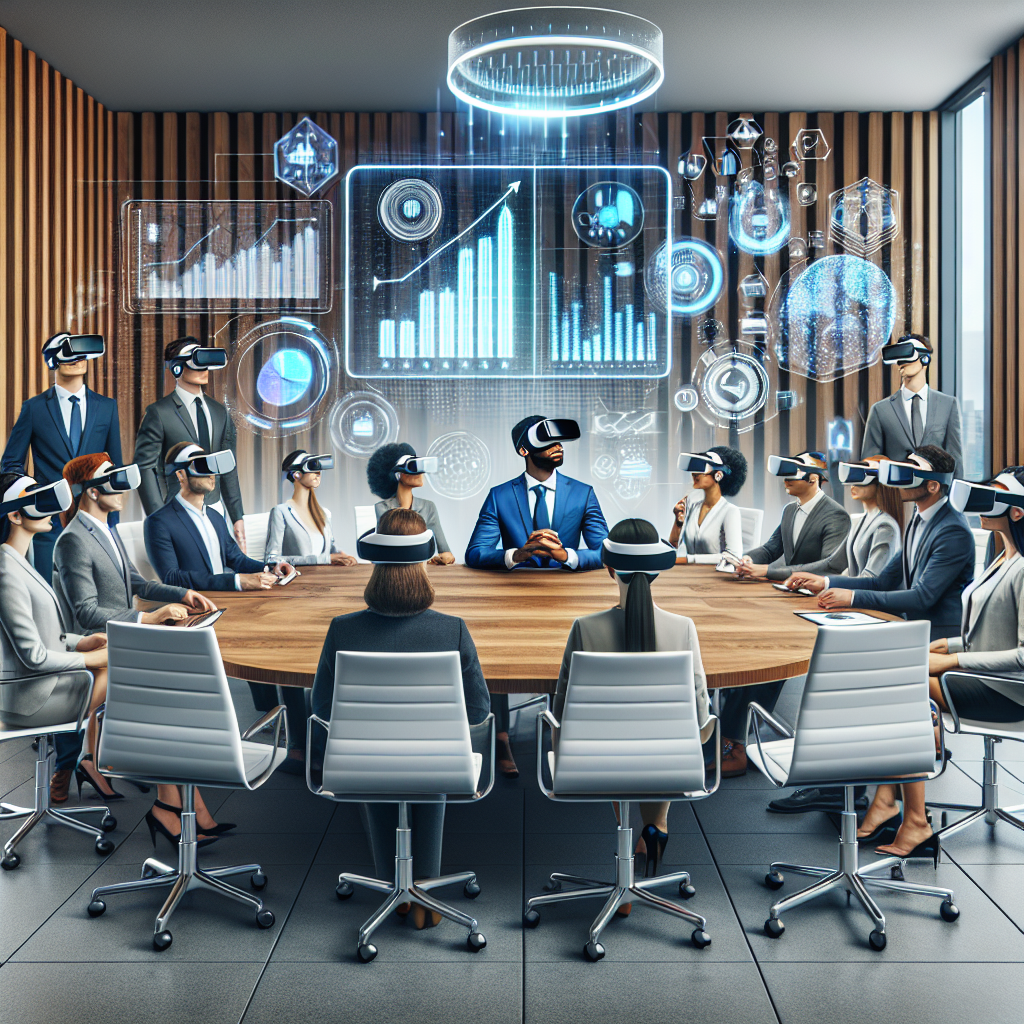


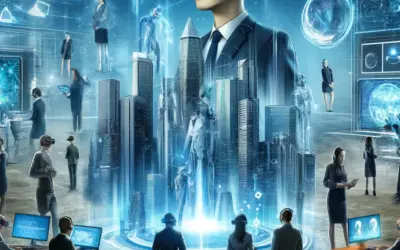
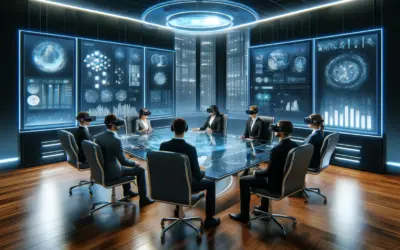
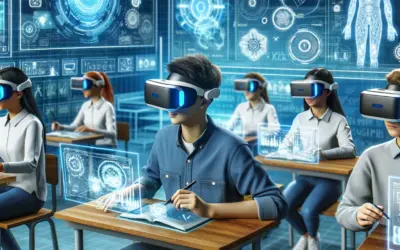
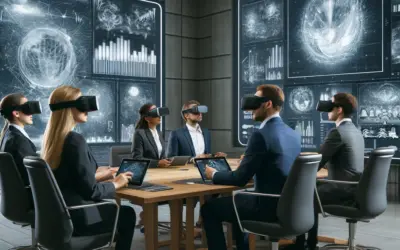
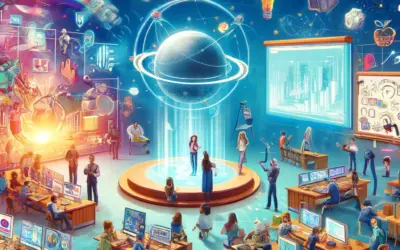
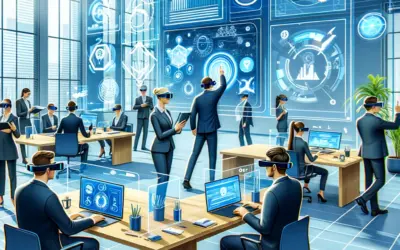
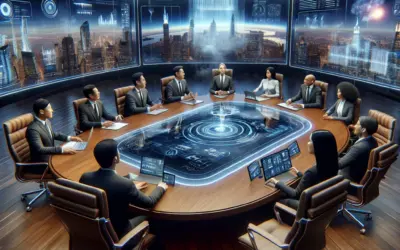


0 comentarios